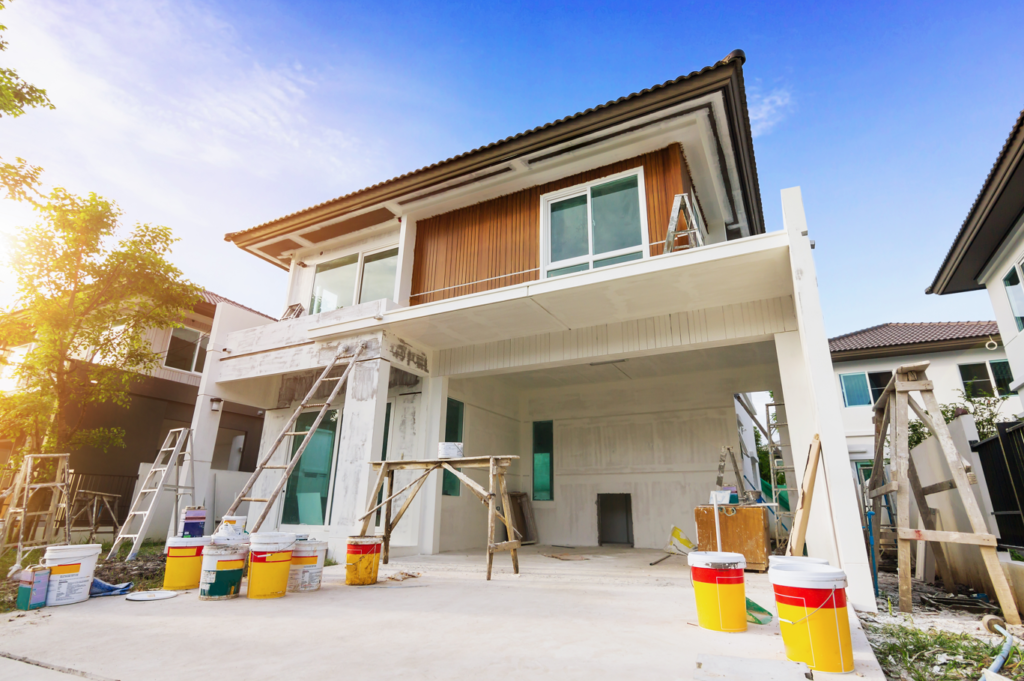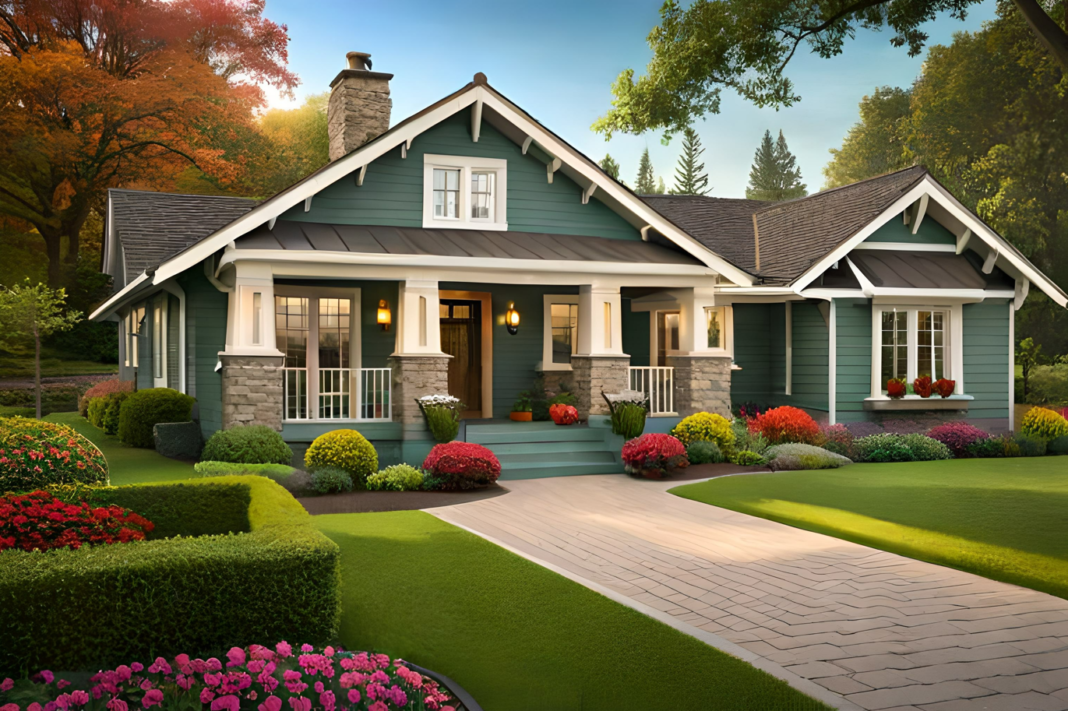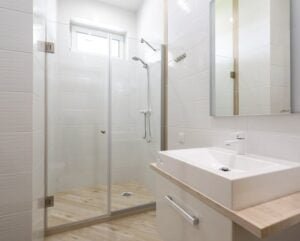Have you ever marveled at a house that stands out in the neighborhood with its striking beauty and allure? That’s the magic of a well-chosen exterior paint color.
Selecting the right color for your home’s exterior isn’t just about aesthetics; it’s about creating an inviting atmosphere that reflects your style and enhances your home’s best features. A fresh coat of paint can rejuvenate an old building, accentuate architectural details, and increase curb appeal and value.
As you embark on this colorful journey, you’re not just painting walls. You’re setting the stage for your home to shine and resonate with charm. So, let’s dive into how you can pick the perfect palette to turn your home into a neighborhood gem.
Understand Your Home’s Architecture
First things first, let’s talk about your home’s architectural style. The architecture can significantly influence your color choice, whether it’s a cozy cottage, a sleek modern build, or a grand Victorian.
Classic homes might call for a more traditional palette, while contemporary homes can handle bolder, more unconventional colors. Please take a moment to appreciate your home’s architectural details and think about how different colors can accentuate them.

Decide To Blend In Or Stand Out With Your Exterior Paint Color
Decide whether you want to blend in with its surroundings for unity or stand out as a distinctive feature in the neighborhood. Blending in involves softer, neutral tones while standing out might mean choosing bolder, more distinct colors.
Whichever you choose, ensure it reflects your style and enhances the home’s architecture. Feel free to experiment with color swatches to find the right combination.
If you feel overwhelmed by choices or the scope of your project, professional color consultants or services like Prairie Exteriors can help you understand how different colors interact and what works best for different styles of homes.
Look Around The Neighborhood
You don’t live in a bubble, and neither does your home. Take a stroll or a slow drive around your neighborhood. Note what you like and what you don’t.
Consider how your home can both fit in and stand out. You want to be a trendsetter, not a rebel. Balance individuality with community aesthetics for the best results.
Be Mindful Of Regulations
Before you embark on your painting journey, ensure you know any neighborhood regulations or required approvals for exterior paint colors. It’s better to be informed ahead of time rather than to face issues later.
Factor In The Environment
Your surrounding landscape plays a vital role in color choice. Homes in lush, green areas might benefit from earthy tones or deep greens, while beachside homes can look fantastic with bright or pastel hues. Consider the colors of the local flora, the sky, and even the ground when choosing.
Consider The Climate
Climate plays a crucial role in choosing the right exterior colors. If you live in a hot and sunny area, lighter colors will reflect the sun’s rays, keeping your home cooler and reducing fading wear.
On the other hand, darker colors might be beneficial if you’re in a cooler climate, as they can absorb heat and withstand the stark winter environment. In humid climates, choose mildew-resistant paints and colors that won’t show every speck of dirt or mold.
Understanding the impact of your local climate can guide you to a palette that’s as practical as beautiful.
Bring Out The Color Wheel
Remember the color wheel from art class? It’s about to become your best friend. Colors opposite each other on the wheel offer a vibrant look, while adjacent colors give a more harmonious appeal. Use the wheel to decide if you want your home to contrast or blend smoothly with its surroundings.
The Rule Of Three
Ideally, you should have three colors for your home’s exterior color palette: a dominant color, an accent color, and a trim color.
The dominant color sets the tone for your home, as it’s used for your home’s siding. Choose a color that complements your home’s architecture and fits well within the environment. A pro tip: lighter colors can make your home appear larger and more inviting, while darker shades offer a solid, grounded look.
Accent colors usually contrast with the main body and trim for a cohesive look. This allows you to add personality to your home. Accent colors are used for doors, shutters, and other decorative elements.
Trim colors usually contrast the main body to highlight the architectural details like windows, doors, and the roofline. A lighter or darker shade of your primary color can provide a subtle and sophisticated look, or you can choose a bolder color for more impact.
For example, let’s choose Soft Terracotta as a dominant color. It’s an earthy, comforting color that gives a warm and welcoming vibe and works well in many environments.
Next, let’s choose an accent color that provides contrast and interest. Using the color wheel, look directly across from the terracotta to find its complementary color, Deep Sapphire Blue. This shade can be a striking choice for the front door and shutters.
For the trim, use a color that complements the dominant color without competing. A Creamy Beige or a lighter shade of terracotta will harmonize the house’s primary color and softly define architectural details without creating too stark a contrast.
Test Your Colors
Before you commit, test your chosen palette. Most paint stores offer sample sizes for use on different areas of your home’s exterior.
Check how the color looks at various times of the day and in different weather conditions. Pick a palette that maintains its charm, whether it’s sunny, snowing, or the leaves are turning. This step can save you from costly regrets and ensure the color fits your vision.
If you don’t like a mess, you can use technology for a more straightforward color selection process. Many paint companies and apps now offer virtualization tools, allowing you to see how different colors will look on your home.
Quality And Finish Matter
Invest in high-quality paint that can withstand the elements and maintain its beauty over time. Consider the finish, as glossy finishes are durable and easier to clean. Matte finishes also work well, as they can hide imperfections on your home’s exterior.
Sustainability Considerations
Opting for eco-friendly paints benefits the environment and can lead to better durability and lower long-term costs. Look for paints with lower VOCs and high resilience to weather conditions.
Maintenance And Upkeep
Different colors and types of paints require varying levels of maintenance. Lighter shades might show more dirt easily, while darker colors can quickly fade in intense sunlight. Make sure to do regular maintenance to keep your exterior paint vibrant and fresh.
Involve Family Members Or Housemates
You don’t need to decide on exterior paint colors alone. Ask for feedback from everyone at home to ensure the choice reflects your family or housemates’ personalities and preferences.
Final Thoughts
Choosing the right exterior paint color is a journey that involves considering your home’s architecture, the surrounding environment, and your style. By taking the time to understand these factors and seeking professional advice when needed, you can ensure that your home’s exterior isn’t only beautiful but also reflects your unique taste and personality.
So, get out there and start color hunting! Your charming home awaits.


